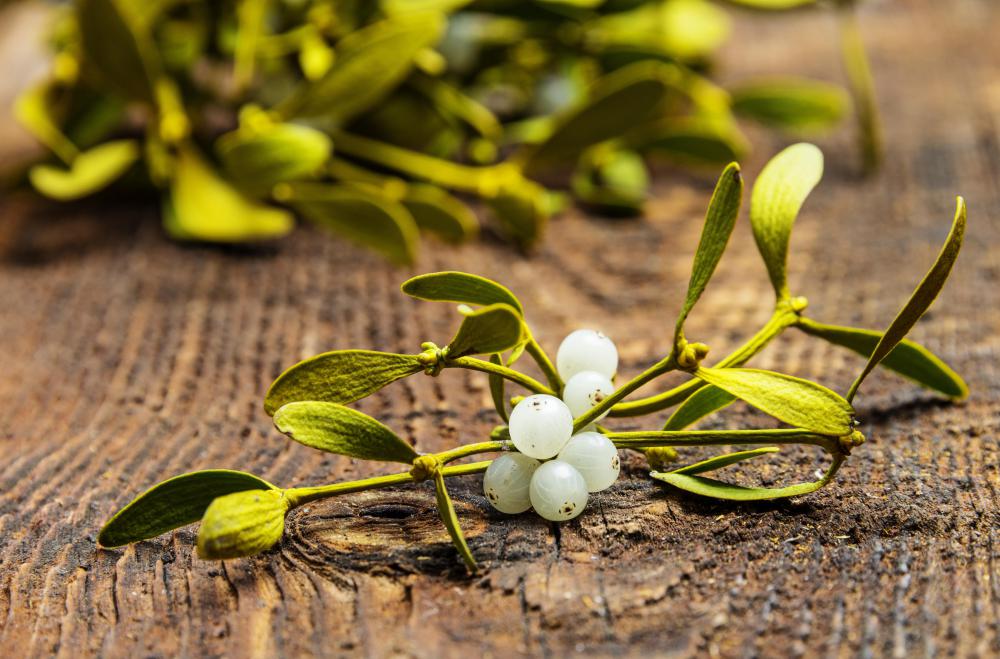At WiseGEEK, we're committed to delivering accurate, trustworthy information. Our expert-authored content is rigorously fact-checked and sourced from credible authorities. Discover how we uphold the highest standards in providing you with reliable knowledge.
What Is the Connection between Mistletoe and Cancer?
Popular in Europe as an alternative therapy for cancer, mistletoe has shown the propensity to shrink malignant tumors in some lab tests. Contradictory medical reports, however, claim that there is no positive correlation between mistletoe and cancer remission, stating that hundreds of patients given mistletoe for cancer saw no reduction in tumors, nor did they see an increase in expected life span after the treatment. Although Europe allows mistletoe to be bought by patients through a prescription, many countries, like the United States, bar use of mistletoe for cancer except in monitored trials because the plant is toxic.
Mistletoe does not grow independently. A partly parasitic plant, mistletoe must use another plant or tree as a host in order to grow. It often grows on apple trees, elm trees and oak trees.

Research supporting the link between mistletoe and cancer remission reveal two key reasons why this plant is effective. First, mistletoe strengthens the immune system, helping the body to fight off cancer; it does this by preventing destruction to the deoxyribonucleic acid (DNA) of leucocytes, white blood cells that defend the body. Secondly, mistletoe purportedly kills cancer cells, preventing metastasis. There are three types of chemicals in mistletoe that could be responsible for stopping the spread of cancer in patients who use it: lectins, alkaloids, and viscotoxins.

Lectins, comprised of proteins and sugar, attach to the outside of a cancer cell and elicit biochemical changes. Made primarily of nitrogen, alkaloids are known for stopping cells from dividing and multiplying. Viscotoxins are known for stimulating immune responses. Researchers are still discovering which chemical molecule is most responsible for the correlation between mistletoe and cancer remission.
Another benefit of merging mistletoe and cancer treatments is that the plant can mitigate negative side effects of traditional cancer therapies, such as radiation and chemotherapy. Studies show mistletoe can lesson aches, hair loss, and low blood cell counts, which often result from cancer therapy. Using mistletoe itself, however, can have side effects, including fever, allergic reactions and shock.
Combining mistletoe and cancer treatments can be done in a variety of ways. Since ancient times, Europeans have steeped mistletoe leaves in hot water to make tea that can be taken thrice a day to combat malignancy; tea has also been made from ground powdery forms of mistletoe. There and in other countries, mistletoe extract is injected subdermally or intravenously as a cancer cure.
In addition, it can be injected by surgeons directly into cancer tumors. Injections are typically given multiple times over roughly three days every week for several months. Extracts of the plant can also be applied topically to lesions.
AS FEATURED ON:
AS FEATURED ON:












Discuss this Article
Post your comments